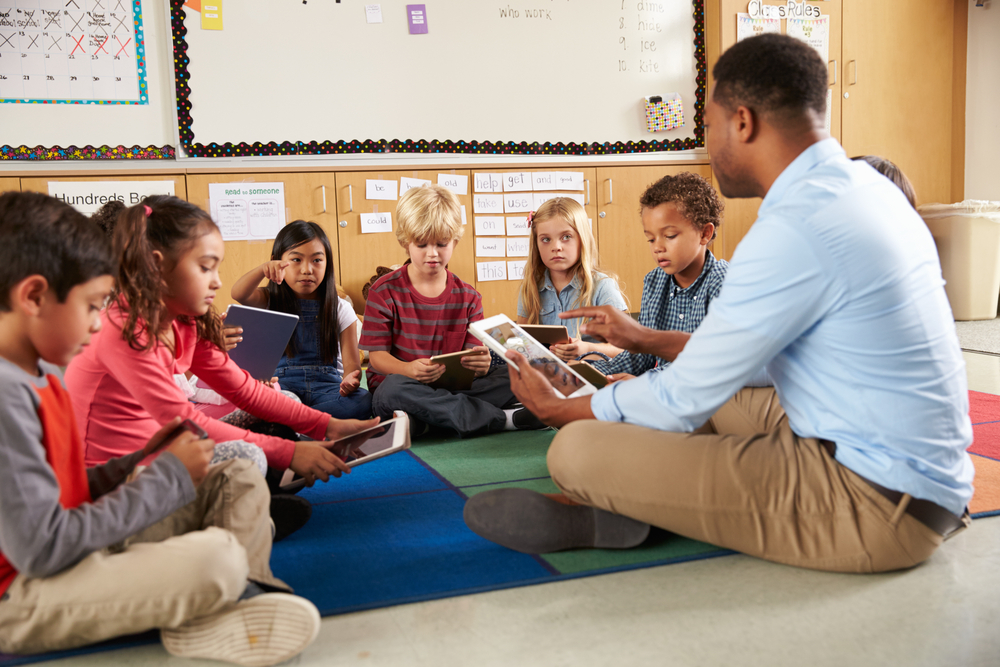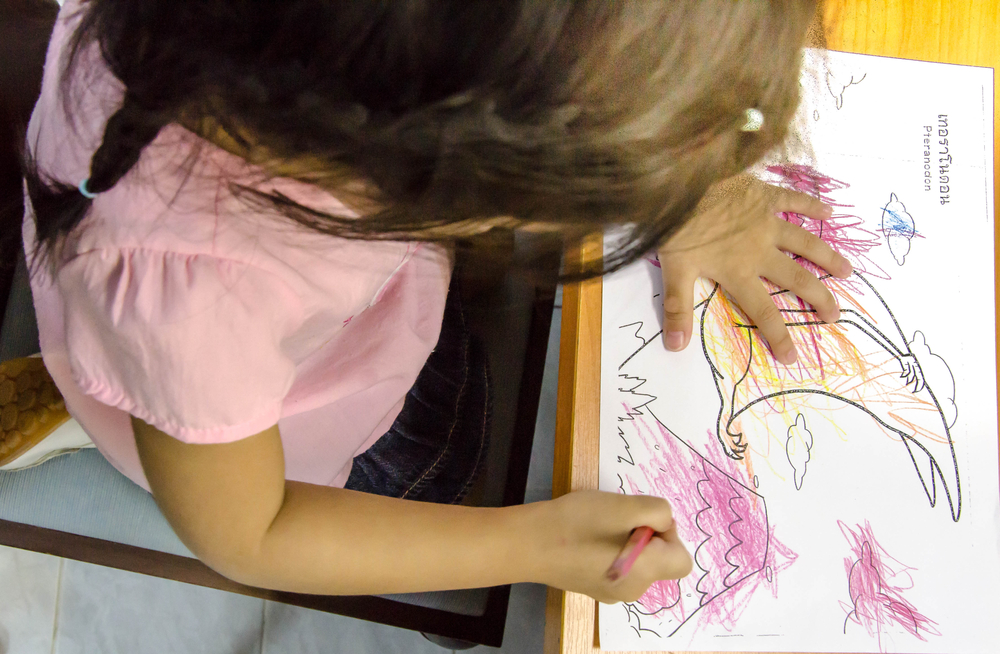Blended Learning Strategies in the Classroom or Homeschool
July 15, 2019
If you’ve been paying attention to education for any length of time, you have likely learned and heard several different buzzwords thrown around over the years. In America, the educational system seems to go through phases, just like the ever-changing trends in parenting, or in any other profession or pursuit.
It’s also undeniable that technological advances have changed our world and the way we do things from communicating with others to ordering groceries. Education is no different, as technology has touched the lives of young children, inspiring and motivating kids to learn and grow. That said, unlike other trends and phases, it’s never been clearer that technology as a part of every child’s education is here to stay. At the forefront of strategies teachers and parents can utilize to educate our learners is the concept of blended learning.
It’s easy to assume that this might mean the integration of virtual coursework, but many questions remain: does it replace teachers? Are students still attending traditional school classrooms? What about children too young to read or type? Let’s dive in and unpack this huge teaching and learning concept that is already no doubt transforming education as we know it across the nation!

What is Blended Learning?
Simply put, blended learning is just as it sounds: a method of teaching that blends virtual learning experiences with more traditional practices like lecturing and notetaking. In the past, classrooms were primarily teacher-centered and authoritarian, as the instructor was looked upon as the sage who imparted wisdom and knowledge upon listening pupils.
Today, education has moved away from teacher-centered approaches to make an educator more of a guide that skillfully leads students to take more ownership for learning. Blended learning fits in perfectly with this vision as it allows the teacher to use technology as a method of learning while he or she monitors and coaches students along during the lesson.
Blended learning environments vary depending on the campus or district and its inventory of capable devices. For instance, some schools may give each student a laptop or tablet when they enroll in the district, while other campuses offer a classroom or school set of laptop or tablet carts. These devices can then be used in lessons in a variety of ways, but most generally utilize them for learning school apps for kids and a specific school-bought online platform where kids can connect, discuss, and post assignments, like Google Classroom, Blackboard, or Schoology.
Overall, blended learning combines the best of both worlds by using technology for learning and combining lessons and assignments with traditional teacher-led instruction. But why is all this necessary if educators have been instructing students for years using older methods that don’t include pricey tech devices?
The Many Benefits of Blended Learning
Blending technology into traditional lessons can have transformative effects on learning when implemented efficiently. For starters, one of the many advantages to the blended learning approach is that it vastly improves student motivation and engagement by making kids more active in the learning process. Other benefits include:
- More self-paced learning to reach students who are ahead or behind
- Extra support or scaffolds for students with learning disabilities or challenges
- Greater accessibility with the internet at home
- Allowing the teacher to guide and correct rather than imparting information en masse.
Blended Learning Models
You might be wondering what blended learning looks like in the classroom. Let’s take a look at the varying methodology behind the concept.
Station Rotation
This model consists of many set and timed stations or centers that includes at least one which offers an online learning component. For example, in a math class, one station may task students with watching and responding to an online video.
Lab Rotation
The word lab in this model refers to a computer lab. This method also allows for rotations, but on a larger scale than stations or centers. A learning lab that takes place at a computer lab is just one of the rotations where everyone there completes the online activity assigned, while others are in rotations receiving direct instruction from other teachers, or paraprofessionals.
Flex Model
This system is best for older students because the instruction primarily takes place online as teachers act as coaches to support learning. The Flex model is often used for credit recovery at the high school level.
Individual Rotation
This personalized learning method is a more self-directed version of station rotations in that the schedule is set by a student’s individual learning needs and moves along to stations that are pre-selected or as the child finishes a lesson or activity.
Flipped Classroom
A flipped class puts the coursework directly in the students’ hands as they learn primarily from online at home and attend classes at school for guided practice and activities led by the teacher. This method is also best used in a middle or high school setting.
A La Carte
Also widely utilized at high schools or even in colleges, this model allows students to take online courses completely, while still attending other courses in a traditional brick-and-mortar school.
Ideas for the Classroom
If you’re an early education teacher, you might be wondering what blended learning strategies might be best suited for your classroom. The answer greatly depends on the technology available on your campus, and what educational software your district purchases for student use.

If your school doesn’t contract with a platform like Google Classroom, it’s ok! The following ideas can be implemented with popular free apps like Brain Pop, Khan Academy, DuoLingo, Google Earth, Edmodo and more!
Station rotation centers
Perhaps the most popular technique for elementary school, learning centers can easily incorporate online activities. In online centers, leave out enough iPads or laptops for each student who will participate at the station at once. Pre-plan a mini-lesson at the online centers that can range from watching educational videos, playing educational games, exploring geography, or even virtual science lessons using an augmented reality app like HP Reveal.
Personalized learning groups
Perhaps your students are placed into reading groups based upon level. Use the Individual Rotation method to personalize learning experiences for each team of students. Assign specific tasks for each reading group and watch as they move along meeting their individual academic needs.
Use iPads to take pictures while exploring concepts
Blended learning is all about incorporating technology into lessons alongside more traditional approaches. Use your school iPads to take photos or videos. Go on a scavenger hunt around the school looking for items or concepts that your class is studying.
Homeschool Techniques
Challenges of blended learning approaches include implementing the models above into the homeschool routine, as well as available technology availability and support at home. However, there are many ways to incorporate its tenets into your homeschool curriculum with the right know-how and software. Follow these strategies for bringing this digital learning into your home classroom:

Follow the enriched virtual model
One last method not mentioned above is the Enriched Virtual Model, which is primarily an online school that is enhanced with face-to-face lessons. This strategy is perfect for parents who want kids to be more self-directed given the right amount of support. To get started, check out a virtual school program like K12 or Connections Academy to enroll your child. Many of these programs offer early elementary education starting from kindergarten and run through the 12th grade. In addition to the virtual school, offer lessons with your child in accordance to their curriculum and provide him or her with ample support throughout the learning process.
Create an individualized digital plan
As a parent, it’s up to you to decide how to integrate technology into whichever curriculum you choose to use with your kids. Check out popular educational apps and based upon your child’s unique learning needs, make goals and determine what information or lessons are best taught or supported by virtual content or resources.
No matter if you’re a teacher in a traditional classroom or a homeschooling parent, blended learning is here for the long run, and technology use is an absolute must for 21st century learners. Educators now have a whole host of teaching tools at their fingertips that weren’t available in the past, meaning students today can reach their utmost potential with each passing grade level!











